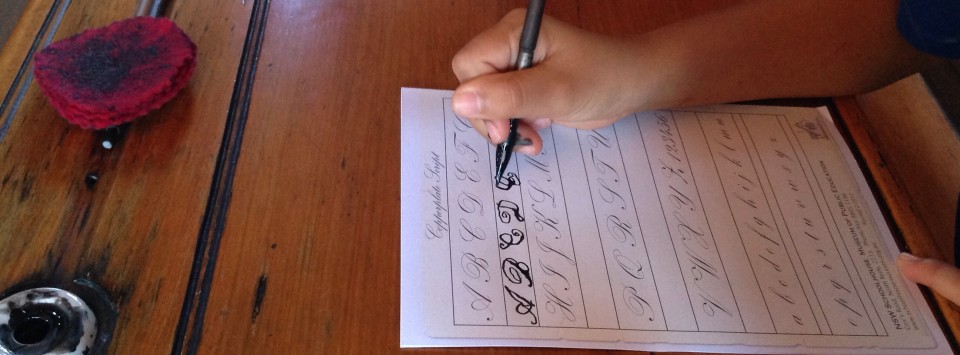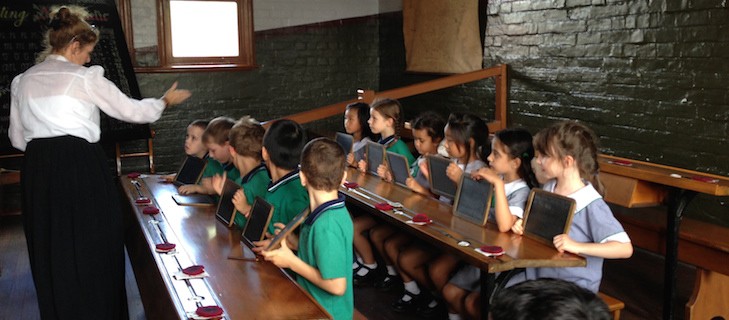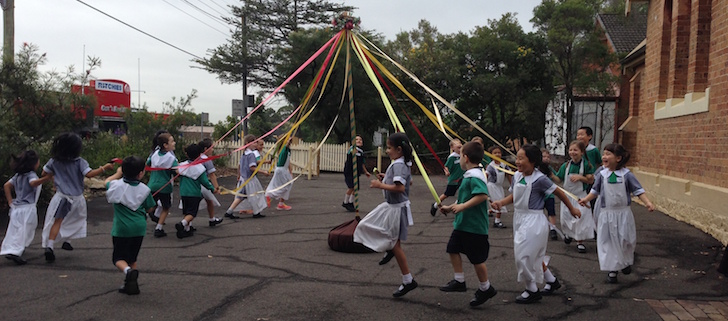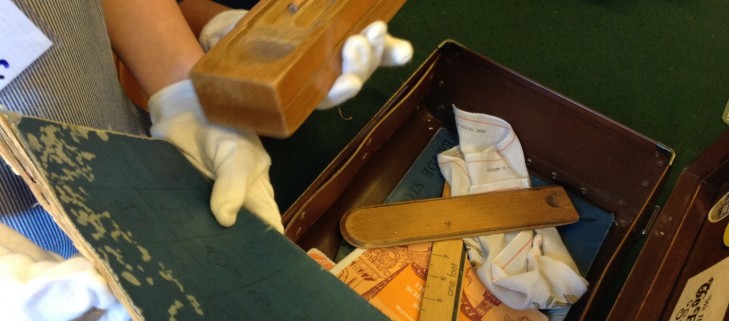Schools
Learning experiences
The NSW Schoolhouse Museum is open for pre-booked school excursions. Students interact with artefacts and use the skills of observing, questioning and discussion to investigate the past. We offer three programs:
- Stage 1 – School Communication in the Past
- Stage 1 – School Life of the Past
- Stage 2 – Continuity and Change
Immersed in an historic site, students engage in object-based learning combining hands-on interaction, stories and recreated experiences. Our authentically restored schoolrooms contain a varied collection of historic objects and images showing aspects of the past and changes and continuities in schooling, communication and daily life.
Students use objects in context enabling close observation and foundational skills in analysing and interpreting sources. Through sensory immersion and guided observation and interpretation students gain historical knowledge and understandings about the past.
Stage 1 – School Communication in the Past
Supporting the new HSIE syllabus topic The Way People Communicate has Changed Over Time, Stage 1 students will engage with and use communication technologies from several eras of the past.
Undertaking activities in authentic historical spaces helps provide the context for understanding communication technologies of the time.
Students will use and compare changing communication technologies to draw conclusions on how and why communications have changed.
Key questions
- What communication tools and technologies were used in classrooms and schooling in the past?
- What do stories, images, objects and sites tell us about communication in the past?
- How has communication changed over time?
- Why have communications changed over time?
Students can:
- Dip an ink pen into an 1880s ink well and write Copperplate dabbed dry with blotting paper. Experience the challenges of wet ink, a scratchy nib and ink that fast runs out.
- Write with a slate pencil onto a slate board, erasing with fingertips. Compare them to mini-whiteboards and tablets of today.
- Examine student work created in the era of pen and ink including exquisite hand-drawn maps, decorative headings and practice letters providing a snapshot of times gone by.
- View blackboards of varying ages decorated with fancy chalk headings and used as the main form of communication of tasks and information in classrooms of the past.
- Observe varied objects relating to early writing technologies such salt clay ink pots, intricately carved pencil boxes and fine-nibbed mapping pens.
- Witness the sharp ring and operation of a 1940s rotary dial telephone, role play dialling the operator and asking for a local business number of the time. Consider the challenges of delays in early manual telephone technologies.
- Compare telephones over time – from a 1900s dial-less candlestick phone to a bakelite rotary dial phone to plastic push-button phones of the 1980s. Observe similarities and differences and infer impacts of improvements.
- Print using rubber stamps and a gelatin hectograph for printing into exercise books at a time when paper was scarce and photocopiers not yet invented.
- Engage with the story of a young 1930s country boy and his correspondence school lessons sent by post. Observe his work and use playful 3D model building to understand how students in remote and rural areas communicated in the past.
- Unpack a Globite suitcase for a typical 1940s school day – setting out a pencil box, ink pens, tuck shop order and work books.
- Type the keys of an early typewriter as the school headmaster or infants mistress communicating information to families. Consider the labour of manual typing and hand-printing using an inked hand duplicator.
- Observe examples of slide projectors that changed through time from an 1870s spirit fuelled magic lantern to an electric 1940s epidiascope to 1970s movie, slide and filmstrip projectors.
- Use a 1960s ink pen with a rounded tip and ink reservoir. Make comparisons to pens past and present in functionality and ease of use.
- Participate in a recreated Let’s Join In ABC Radio Broadcast for Schools. Consider the impacts of radio broadcasts in a time before television and computers.
Stage 1 – School Life in the Past
Supporting the topics Present and Past Family Life and The Past in the Present, Stage 1 students are immersed in aspects of daily school life of the past. They compare daily school life past and present, use changing technologies and analyse and interpret remains of the past. Read about a typical visit.
Inquiry questions
- How has school and everyday life changed and remained the same over time?
- How do we know what school was like in the past for children and teachers?
- What aspects of past schooling can be seen today and what do they tell us?
- How have changes in technology shaped our schooling and daily lives?
Students can:
- Experience an 1880s school lesson sitting at long-toms by firelight
- Examine artefacts and discuss the stories they hold
- Explore exhibits of old objects and consider changes over time
- Look at early crafts and work samples treasured through generations
- Write on slates with genuine slate pencils
- Dip an ink pen to write Copperplate with pen and ink
- Study early photographs of school children and discover life in the past
- Use early technologies such as rubber stamps and jelly pads
- Dress in pinafores and sailors’ collars if they wish to
- Dance around a maypole
- Practise precision exercises using wands or dumb bells
- Play with early toys such as knuckles, marbles and spinning tops
- Eat toast cooked over the fire in winter months
- Enjoy early playground games such as ‘fly’, skipping and bowling hoops
- Compare life of the past to that of today.
Stage 2 – Continuity and Change
Supporting the topic Community and Remembrance, Stage 2 students analyse primary sources and immersive experiences to investigate the continuities and changes in education from the 1880s to the present. Students use changing technologies, compare teaching and learning methods and analyse and interpret sources such as artefacts, photographs and recreated classrooms. Read about a typical visit.
Inquiry questions
- How and why has primary education in New South Wales changed?
- What aspects of education in New South Wales have remained the same?
Students can:
- Experience recreated 1880s school lessons and technologies
- Examine early student workbooks and crafts treasured through generations
- Analyse artefacts and photographs and infer the evidence they hold
- Explore past educational objects and consider changes and continuities
- Write on slates with genuine slate pencils
- Dip an ink pen to label a map and write Copperplate with pen and ink
- Create twisted threads, weaving or knitting as past school crafts
- Assemble hand-crafted wooden toys as a past manual skill
- Construct a Cuisenaire rod mat to complete number sentences
- Use a jelly pad as an early printing technology
- Skip around a maypole
- Practise precision exercises using wands
- Play mid-20th century schoolyard games such as skipping and ‘fly’
- Dress in lacy collars and sailors’ collars if they wish to
- Toast bread over the fire in the winter months
- Compare education of the past to that of today.





